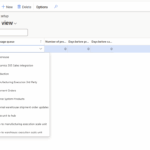Now Reading: The Microsoft Cloud Partner Margin Squeeze
-
01
The Microsoft Cloud Partner Margin Squeeze
The Microsoft Cloud Partner Margin Squeeze

Just a few short years ago, Office 365 launched. At the time, selling the product required genuine knowledge, and migrating to the product required genuine expertise. There was significant partner margin and incentives on the sale of Office 365, as well a nice margins on deploying it. Those days have long since passed.
Today, most customer companies are well aware of Office 365 and many are making plans to move to it. The seller’s job of explaining what it is, and why the cloud is a safe place to be, has become significantly less necessary. With tools like Skykick and Bit Titan, the technical expertise required to migrate a typical customer has been all but eliminated. Basically, anyone with a quarter of a brain, can sell and deploy office 365 today for a broad category of customers. What this means, as if you don’t already know, is that margins have been significantly compressed. If you did not see this coming, then you weren’t paying any attention at all.
Maybe the On-Premise guys were Right!
We were quick to move to Office 365 right when it launched. Coming from a cloud background as a former Salesforce.com consultant, may have given us a leg up, but frankly, before Office 365, we had no play to make in that space because we did not possess the technical hardware skills to fix a broken mouse. As Office 365 took off, and yanked us and and other “early movers’ up with it, the conversation shifted to “Why are all you other partners still selling on-premise?. Jump in, the waters fine!” Many could not figure out how to switch revenue models, which is another conversation entirely. Now with the compressed margins on cloud, some of those on-premise partners who stayed on the sidelines might be looking pretty smart, but their days are numbered as cloud continues to inhale their customers.
I’ll Race you to the Bottom!
Before CSP, most partners acquired Office 365 via the portal (WebDirect). This is also the same place that customers could by it directly. In WebDirect, Microsoft set the retail price. Now, in Direct CSP, Microsoft sets the wholesale price to partners, in the case of Indirect CSP, Microsoft sets the wholesale price to your distributor, who then sets your price. In either case, you set your selling price to the customer. Good news? Well, this means that partners now have some margin to play with and can actually sell Office 365 to end customers at below the retail price. Let the race to the bottom commence. Offset that further by the additional costs you incur via CSP, like managing billing and support, and you can quickly see where the margin squeeze is inevitable. Office 365 is now a commodity (actually it has been for a while now). With the exception of complex projects, there is little money to be made and if your focus is on Office 365 alone, you won’t be around very long.
Did Microsoft pull the Rug Out?
I guess if you have not been paying attention, and just lifted your head up one day and wondered where all the money went, you might think that MS pulled a fast one on you. But if you look past MS to the entire market, and the competition, it is not hard to see that MS is just reacting as they must. Your ability to make a nice profit as a Microsoft Partner is not their obligation or responsibility… it is yours. It’s not like Microsoft has not been warning you that this was coming. How many times have you heard them tell you that you need to develop some I.P. or focus on a vertical and gain specific expertise? That you did not act on these suggestions/warnings, is not their fault.
Can Azure save the day for you?
For the moment, partners that have moved more of their focus to Azure are doing very well. But that path ultimately leads to the same place, but maybe not as quickly as genuine technical skill is still a requirement. The same goes for EMS, Cloud PBX, or any other “utility”. But watch as Microsoft, and third-parties, work to eliminate that expertise requirement from the equation. Remember the skills that it used to take to setup an on-premise exchange server? Now that can be setup online by a complete moron who checks a few boxes. It won’t be long before Azure is a dashboard of a few checkboxes.
So can this I.P. idea solve the squeeze?
Maybe, for a while. The I.P. space is littered with hole-plugging solutions for which the hole they were plugging was eventually plugged by Microsoft. It’s not that they singled them out for elimination; odds are the hole was on the roadmap to be plugged eventually. For the most obvious holes, there will be multiple solutions created, and those are the most likely to be plugged. Most I.P. like that has a short shelf life. I.P. that has a true shelf life seeks to plug holes that Microsoft will never plug, holes that are obscure enough that multiple players will not seek to plug them, which brings us full-circle back to verticals. While Microsoft has made a few direct attempts at vertical solutions (see Matter Center for Law Firms) they consistently give up on them after a while. Microsoft simply does not have vertical expertise. It may appear that sometimes they are travelling up the tree to certain large branches, but they will never get to the leaves. Microsoft is simply too wide to get very narrow.
That Leaves us the Leaves
In order to sustain good margins in the future, you will eventually have no choice but to focus on some verticals. Focusing on ten verticals is not focusing, it’s marketing. Customers have always been willing to pay a premium for partners who actually understand their specific needs, yet almost all partners are generalists. There is money being left on the table. It takes more than memorizing a few buzzwords to grab that money however. Having an attitude that, from a technology standpoint, all businesses are basically the same, is the generalist’s pitch; easily overcome by someone with actual vertical expertise.
How long before CRM becomes a Commodity?
There are few business applications that need to be vertically specific more than CRM in order to succeed. Ironically, where there are multiple CRM solutions for a particular vertical, there will be price pressure, but there are a lot of “leaves” still to pursue. Business Applications are far more resistant to commoditization than say, Email, Back-up services or Virtual Machines. While our RapidStart solution is not vertically specific, we have worked with a few vertical partners who have developed their own version on our platform that is quite vertical, and they are selling it at three to four times what our generalist partners are. If you have some genuine vertical expertise, let’s talk about a RapidStart model specific to your target clients’ needs.
The post The Microsoft Cloud Partner Margin Squeeze first appeared on Steve Mordue MVP.














